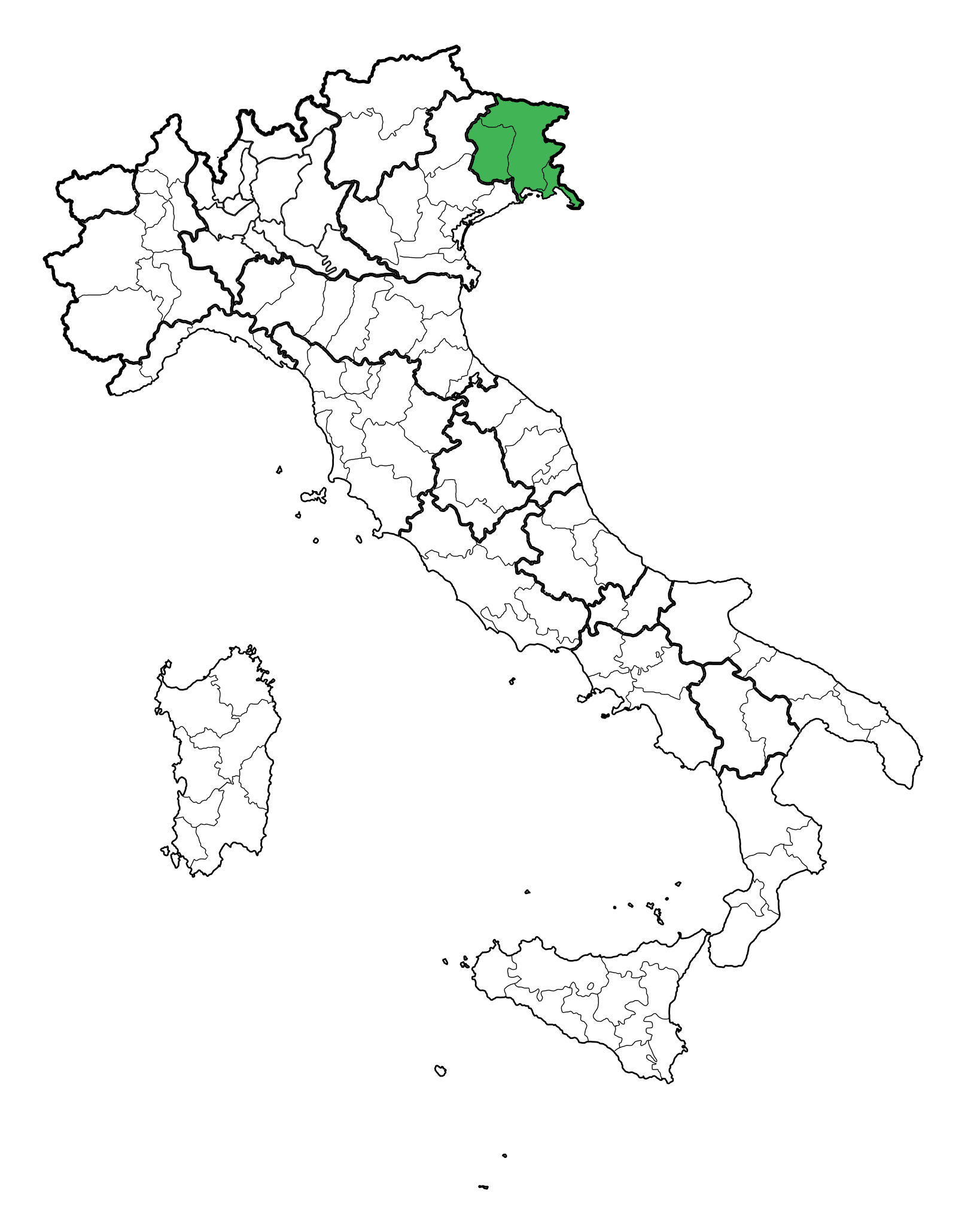
/friˈulɪ venˈɛt͡sia d͡ʒˈulia/
- Friuli Venezia Giulia is often credited with pioneering modern white winemaking techniques in Italy. The region’s winemakers were among the first to adopt temperature-controlled fermentation and the use of stainless steel tanks, which preserve the fresh, vibrant character of the wines.
- The region grows a wide variety of grape varieties, both indigenous and international. Indigenous varieties include Friulano, Ribolla Gialla, and Picolit, while international varieties such as Sauvignon Blanc, Chardonnay, and Merlot also thrive here.
- Friuli Venezia Giulia is famous for its “orange wines,” which are white wines made with extended skin contact, giving them an amber or orange hue. These wines have gained international recognition for their unique flavors and complexity.
- Romandolo DOCG
- Colli Orientali del Friuli Picolti DOCG
- Rosazzo DOCG
- Lison DOCG
- Prosecco DOC
- Friuli Colli Orientali DOC
- Friuli Isonzo DOC
- Carso DOC
The northern part of Friuli Venezia Giulia is dominated by the Julian Alps and the Carnic Prealps. These mountain ranges provide a natural barrier against cold northern winds and create a unique microclimate that is favorable for viticulture. The mountainous terrain also contributes to diverse soil types, including marl and sandstone, which are ideal for grape growing.
To the south, the region is bordered by the Adriatic Sea. The maritime influence moderates the climate, providing mild winters and cool summers. This helps maintain a balanced ripening process for the grapes, preserving their acidity and aromatic qualities.
Visual Profiles:




- Lorem ipsum dolor sit amet, consectetur adipiscing elit. Ut elit tellus, luctus nec ullamcorper mattis, pulvinar dapibus leo.
- Lorem ipsum dolor sit amet, consectetur adipiscing elit. Ut elit tellus, luctus nec ullamcorper mattis, pulvinar dapibus leo.
Visual Profiles:




- Total Production: 1.073.000 Hectolitres
- White Wine: 33%
- Rose Wine and Red Wine: 67%
